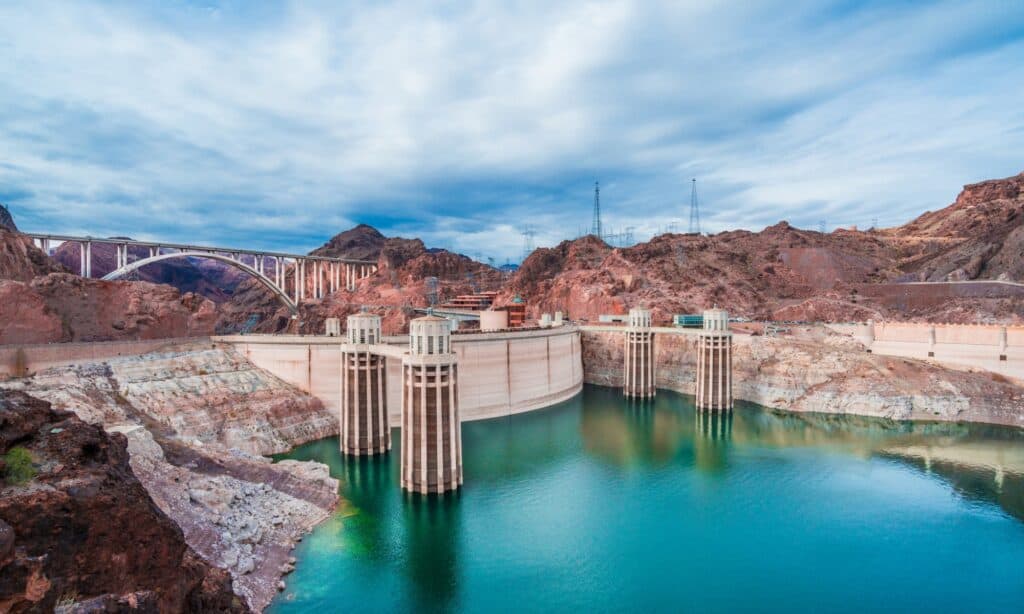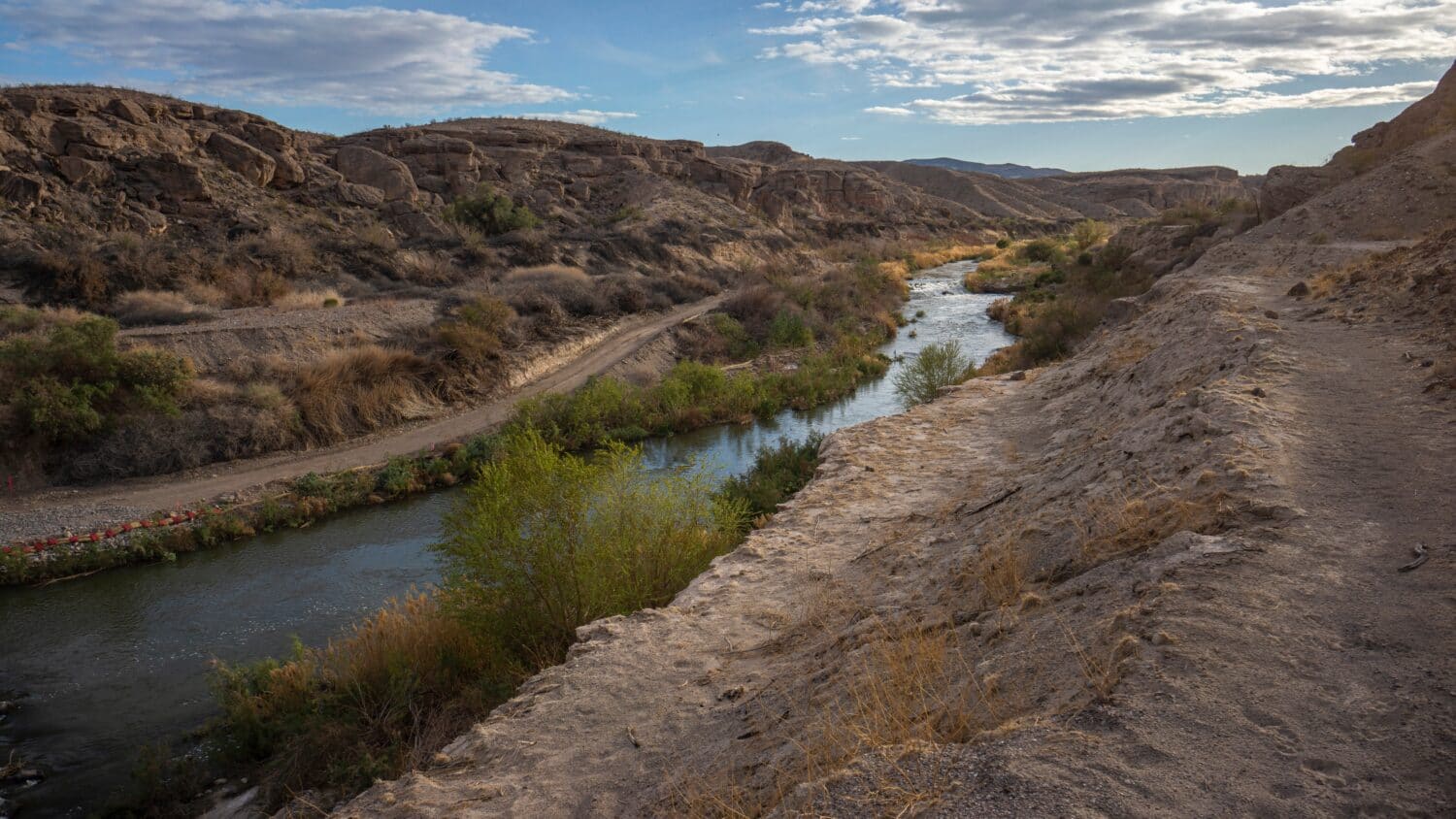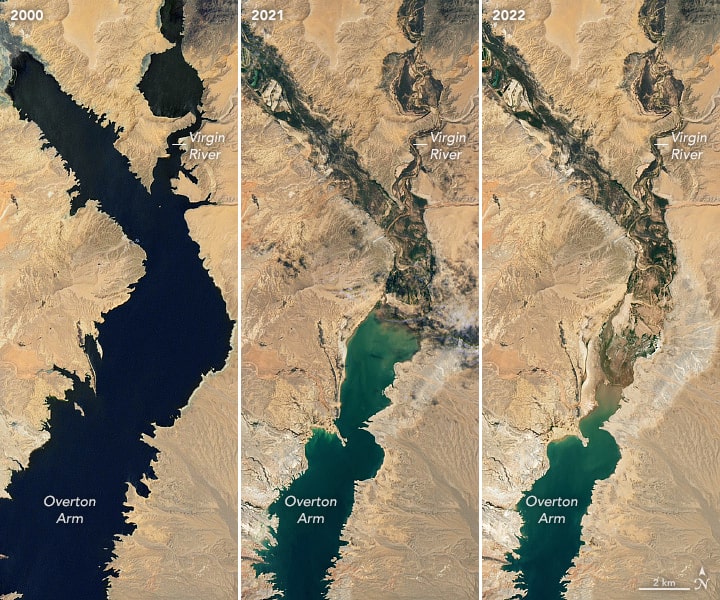Lake Mead is hands down one of the most important reservoirs in the United States. Not only does it provide water for drinking, agriculture, and industrial use for more than 20 million people, but it also provides millions more with a site for recreation and an escape from the heat of the desert. As important as the lake is to the wildlife and people in the surrounding states, however, many wonder about the quality of the water there. It all boils down to this — the amount of pollution associated with Lake Mead is staggering.
In this article, we’ll find out what types of contaminants end up in Lake Mead’s water. We’ll also find out where the lake is, how big it is, and why it is so polluted to begin with.
Where Is Lake Mead?
Lake Mead is an artificial reservoir formed by the impoundment of the Colorado River by the Hoover Dam. It sits in the Black Canyon of the Mojave Desert, just east of Las Vegas, Nevada, covering more than 157,000 acres of land. When the reservoir is full, the lake spans nearly 65 miles from its impoundment at the dam, stretching to Pearce Ferry. While it is not as large as Lake Powell in terms of surface area, the lake is the largest reservoir by volume in the entire United States, holding back more than 1.1 trillion gallons of water!

The Hoover Dam impounds the Colorado River to create Lake Mead, holding back more than 1 trillion gallons of water.
©iStock.com/superjoseph
What Roles Does Lake Mead Play?
Because of its location in the middle of the Mojave Desert, Lake Mead is incredibly important for humans. It serves about 25 million people in the surrounding states of Arizona, Nevada, and California, as well as people in Northern Mexico. The Hoover Dam also uses the impoundment to generate hydroelectric power, supplying residents of these areas with electricity. In a single year, the dam’s powerhouse can generate around 4 billion kilowatt-hours of power. That’s enough to supply 376,000 average American homes with power for an entire year.
In addition to the wealth of consumable resources the lake provides, it affords millions of people per year a place for recreation. Four marinas sit along more than 700 miles of shoreline (the actual length changes with the water level), giving boaters and anglers easy access to the lake. Many people launch paddle boats, canoes, and kayaks from various locations along the shore and take in the beautiful desert scenery from the water. Lake Mead also provides millions with a place to escape the brutal heat of the Mojave Desert.

Millions of people rely on Lake Mead for recreation and a source of water.
©iStock.com/CrackerClips
Treatment of Lake Mead’s Water
Before the water in Lake Mead ever makes it to a residential or commercial faucet, it undergoes extensive treatment at various treatment facilities — it has to make it safe to drink.
First, the water undergoes pre-filtering, to remove any large objects like trash, debris, or large sediment. Then, other suspended material is allowed to separate in large holding tanks. Oily, organic materials and other lightweight particles float on the top while heavier materials like sediment and sludge settle to the bottom. These are separated and deposited in a landfill. Next, the water travels to another series of holding tanks to undergo the next step: aeration. During this step, agitation creates water movement allowing good oxygen diffusion. This ensures that the bacteria in the tanks can consume the excess nutrients, like nitrates, in the water before they make their way back toward the lake. Without this step, nutrient buildup could cause massive algal blooms.
From there, the water makes its way through multiple filtration stages. These stages make use of sand, and anthracite coal to pick up some dissolved solids like salts and chemical contaminants. Some treatment facilities have special membrane filters with tiny pores that can strain out even more chemical contaminants. About a quarter of all the wastewater in Southern Nevada is treated this way. Finally, the facilities subject the water to high levels of ozone, UV light, or chlorine to kill off any pathogens that managed to slip through the cracks. After disinfection, the water makes its way back into local waterways.
While treatment of the area’s wastewater tends to be rigorous, it cannot always clear all of the contaminants that end up in the waterway. Additionally, some pollutants make it into the lake well before treatment even begins.
Risks to People and Inhabitants
As important as Lake Mead is to surrounding towns and cities, it and other nearby bodies of water bear the brunt of human civilization.
Pollution in Lake Mead
The water that enters Lake Mead contains many contaminants before it even reaches the impoundment. The Colorado River, which supplies nearly 97% of the water in the lake, has long been subject to industrial, agricultural, and residential discharge. Though its water originates from alpine snowmelt in the Rockies, it picks up quite a lot of pollutants, like hexavalent chromium, nitrates, and runoff from uranium tailing pits.
The Las Vegas Wash is also a source of pollution in Lake Mead. Tragically, the river carries with it the waste of nearby towns, cities, and industrial endeavors. Beginning in 2015, the EPA began overseeing efforts to clean up one closed-down chemical manufacturing site near Henderson, Nevada. Runoff from the site, which belonged to the Black Mountain Industrial Complex, is directly responsible for discharging dangerous levels of perchlorate, a component of rocket fuel and explosives, into the Wash. Though some of the perchlorate seeps into the banks of the Wash, between 50 and 100 pounds per day were still reaching Lake Mead as of January 2015. As of 2020, levels entering have not ceased but have decreased by a significant amount.

The Las Vegas Wash picks up runoff from nearby towns and cities, carrying the contaminants back to Lake Mead.
©Eric Poulin/Shutterstock.com
Perchlorate isn’t the only contaminant hitching a ride in the Las Vegas Wash. The river also deposits over 175 million gallons of treated wastewater into the lake per day. While the water undergoes filtration, it still carries with it much of the household wastes that consumers put down the drain, such as cleaning solvents, non-stick agents, and pharmaceuticals. The Wash also receives all of the stormwater runoff from the valley’s cities, which carries motor oil, flame retardants, pesticides and herbicides, and excess fertilizers into the lake. The buildup of these contaminants in fish, birds, and other small animals causes adverse health effects like cancers and hormonal and reproductive damage.
Reaching Dead Pool
In recent years, climate change has drastically affected the water in Lake Mead. Aside from the rising water temperature causing increased algal growth, prolonged periods of drought have caused the lake’s water volume to plummet. Experts warn that, as soon as 2025, the water level could fall so low that it cannot pass through the gates at the Hoover Dam. This would effectively prevent the Colorado River from flowing downstream past the dam, spelling disaster for the millions of people and animals that depend on its water.

If Lake Mead’s water level continues to drop, tens of millions of people may lose access to their primary water source.
Climate change is having effects upstream of Lake Mead as well. Lake Powell, with its lock and dam, is responsible for delivering water downstream to Lake Mead at regular intervals. Problematically, the water level there is falling as well. As of May 2023, Lake Powell is the closest to a dead pool it has been since 1968. If the trend continues, both lakes may lose enough water to cause a cascade of problems going forward, for both humans and wildlife.
As the water level continues to fall, more and more of the lakebed becomes exposed. This means that much of the pollution in Lake Mead that has settled on the lake bottom can now be picked up by rainwater and carried back into the reservoir. This, coupled with the falling water level, means that the water has a higher rate of contamination by volume. The resuspension of these contaminants in the water column also renews their effects on wildlife and allows them to travel downstream. Over time, this will put further strain on the already disrupted ecosystems in and around the lake.
The photo featured at the top of this post is © fellswaymedia/Shutterstock.com
Thank you for reading! Have some feedback for us? Contact the AZ Animals editorial team.







